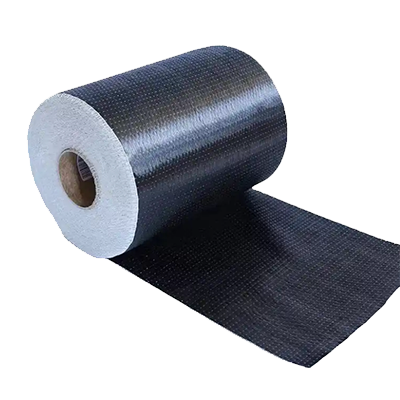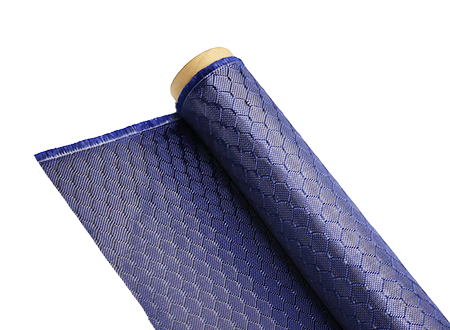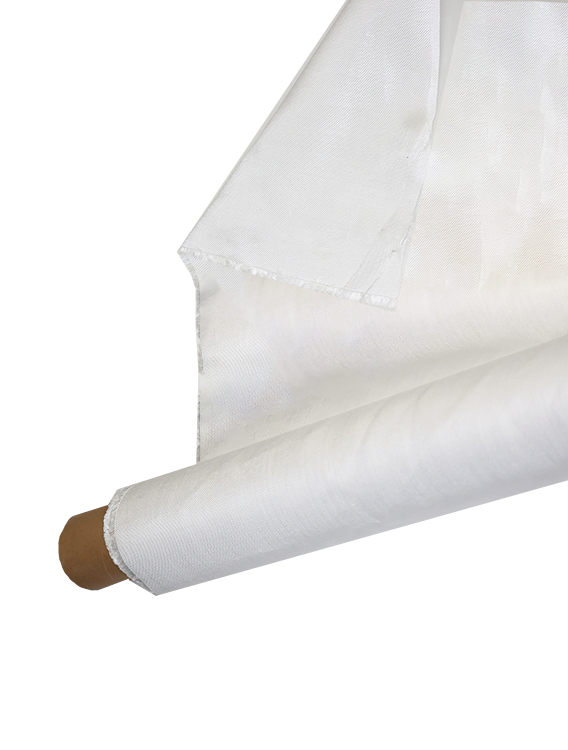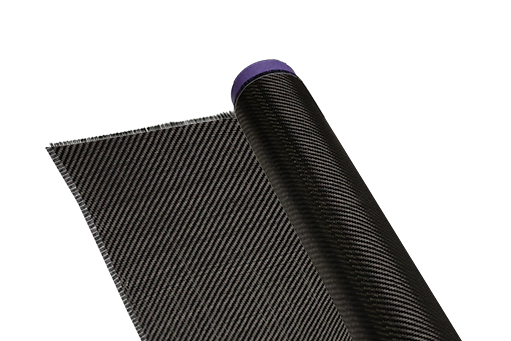How to Identify Authentic Carbon Kevlar Hybrid Fabric?
-
Table of Contents
“Unmasking Quality: Your Guide to Identifying Authentic Carbon Kevlar Hybrid Fabric.”
Introduction
Identifying authentic carbon Kevlar hybrid fabric is essential for ensuring quality and performance in various applications, from automotive to aerospace. This specialized material combines the lightweight properties of carbon fiber with the strength and durability of Kevlar, making it a popular choice for high-performance products. To distinguish genuine carbon Kevlar hybrid fabric from imitations, one must consider several key factors, including visual inspection, texture, weight, and burn tests. Understanding these characteristics will help consumers and manufacturers alike make informed decisions when selecting materials for their projects.
Key Characteristics of Authentic Carbon Kevlar Hybrid Fabric
When it comes to identifying authentic carbon Kevlar hybrid fabric, several key characteristics can help distinguish genuine materials from imitations. Understanding these features is essential for consumers and manufacturers alike, as the quality of the fabric directly impacts performance, durability, and safety in various applications, particularly in industries such as automotive, aerospace, and sports equipment.
One of the most prominent characteristics of authentic carbon Kevlar hybrid fabric is its unique composition. This fabric is a blend of carbon fiber and Kevlar, each contributing distinct properties to the final product. Carbon fibers are known for their high tensile strength and lightweight nature, while Kevlar is renowned for its exceptional resistance to abrasion and impact. When these two materials are combined, the resulting hybrid fabric exhibits a remarkable balance of strength, flexibility, and resilience. Therefore, when assessing a fabric, it is crucial to verify that it contains both carbon and Kevlar fibers in appropriate proportions, as this combination is what defines its authenticity.
In addition to its composition, the texture and appearance of the fabric can also provide valuable clues. Authentic carbon Kevlar hybrid fabric typically has a distinctive weave pattern that is both tight and uniform. This characteristic not only enhances the fabric’s structural integrity but also contributes to its aesthetic appeal. When examining the fabric, look for a smooth surface with a consistent finish, as irregularities or uneven textures may indicate inferior quality or counterfeit products. Furthermore, the color of the fabric can be a telling sign; genuine carbon Kevlar hybrid fabrics often feature a dark, rich hue due to the carbon fibers, which can range from deep black to dark gray, depending on the specific manufacturing process.
Another important aspect to consider is the weight of the fabric. Authentic carbon Kevlar hybrid fabric is lightweight yet robust, making it suitable for applications where both strength and weight savings are critical. When handling the fabric, it should feel substantial without being overly heavy. If the fabric feels flimsy or excessively light, it may not be a true hybrid material. Additionally, the fabric’s flexibility is a key indicator of its authenticity. Genuine carbon Kevlar hybrid fabric should be pliable enough to conform to various shapes without compromising its structural integrity.
Moreover, the performance characteristics of the fabric can serve as a reliable indicator of authenticity. High-quality carbon Kevlar hybrid fabrics are designed to withstand extreme conditions, including high temperatures and significant mechanical stress. Conducting simple tests, such as checking for resistance to tearing or abrasion, can provide insights into the fabric’s quality. Authentic materials will demonstrate superior performance in these areas, while inferior products may fail to meet the necessary standards.
Lastly, sourcing the fabric from reputable suppliers is crucial in ensuring authenticity. Established manufacturers often provide certifications or documentation that verify the material’s composition and performance characteristics. By purchasing from trusted sources, consumers can mitigate the risk of acquiring counterfeit products and ensure they are investing in genuine carbon Kevlar hybrid fabric.
In conclusion, identifying authentic carbon Kevlar hybrid fabric involves a careful examination of its composition, texture, weight, flexibility, performance characteristics, and sourcing. By paying attention to these key characteristics, individuals can make informed decisions and select high-quality materials that meet their specific needs.
Common Counterfeits: How to Spot Fake Carbon Kevlar Hybrid Fabric

In the realm of advanced materials, carbon Kevlar hybrid fabric has gained significant attention for its exceptional strength-to-weight ratio and versatility. However, as demand for this innovative fabric has surged, so too has the prevalence of counterfeit products. Identifying authentic carbon Kevlar hybrid fabric is crucial for consumers and manufacturers alike, as the performance and safety of applications relying on this material can be severely compromised by inferior imitations. To effectively discern genuine fabric from its counterfeit counterparts, one must be aware of several key indicators.
Firstly, examining the fabric’s texture and appearance is essential. Authentic carbon Kevlar hybrid fabric typically exhibits a distinct weave pattern that combines the unique characteristics of both carbon fiber and Kevlar. Genuine materials will have a smooth yet slightly textured surface, reflecting the high-quality manufacturing processes involved. In contrast, counterfeit fabrics often display irregularities in the weave, such as inconsistent patterns or uneven textures, which can be indicative of substandard production techniques. Therefore, a close inspection of the fabric’s surface can provide valuable insights into its authenticity.
Moreover, the weight of the fabric is another critical factor to consider. Authentic carbon Kevlar hybrid fabric is engineered to be lightweight while maintaining structural integrity. Counterfeit versions, on the other hand, may be heavier due to the use of inferior materials or excessive resin content. By comparing the weight of the fabric to known standards or specifications, one can gauge whether the product is genuine or a counterfeit. It is advisable to consult technical data sheets or product specifications from reputable manufacturers to establish a baseline for comparison.
In addition to tactile and visual assessments, one should also investigate the fabric’s chemical composition. Authentic carbon Kevlar hybrid fabric is composed of a specific ratio of carbon fibers and Kevlar, which contributes to its unique properties. Counterfeit fabrics may utilize alternative fibers or fillers that do not possess the same performance characteristics. To verify the material’s composition, one can conduct a burn test, where a small sample of the fabric is ignited. Genuine carbon fibers will burn with a specific odor and leave behind a fine ash, while synthetic alternatives may produce a different smell and residue. However, it is crucial to exercise caution when performing such tests, as they can pose safety risks.
Furthermore, sourcing the fabric from reputable suppliers is paramount in ensuring authenticity. Established manufacturers often provide certifications and documentation that verify the material’s origin and quality. When purchasing carbon Kevlar hybrid fabric, it is advisable to request such documentation to confirm that the product meets industry standards. Additionally, engaging with suppliers who have a proven track record in the industry can further mitigate the risk of acquiring counterfeit materials.
Lastly, staying informed about the latest developments in material technology can enhance one’s ability to identify authentic carbon Kevlar hybrid fabric. As counterfeiting techniques evolve, so too do the methods for detecting them. By keeping abreast of industry trends, innovations, and best practices, consumers and manufacturers can better equip themselves to navigate the complexities of the market.
In conclusion, identifying authentic carbon Kevlar hybrid fabric requires a multifaceted approach that encompasses visual inspection, weight analysis, chemical composition testing, and sourcing from reputable suppliers. By remaining vigilant and informed, one can significantly reduce the risk of encountering counterfeit products, thereby ensuring the integrity and performance of applications that rely on this advanced material.
Testing Methods for Verifying Carbon Kevlar Hybrid Fabric Authenticity
Identifying authentic Carbon Kevlar hybrid fabric is crucial for industries that rely on high-performance materials, such as aerospace, automotive, and sports equipment. The unique properties of this composite material, which combines the lightweight strength of carbon fibers with the durability of Kevlar, make it essential to ensure that the fabric being used meets the required specifications. To achieve this, various testing methods can be employed to verify the authenticity of Carbon Kevlar hybrid fabric.
One of the most common methods for assessing the authenticity of Carbon Kevlar hybrid fabric is through visual inspection. This initial step involves examining the fabric for any inconsistencies in texture, color, and weave pattern. Authentic Carbon Kevlar hybrid fabric typically exhibits a distinct appearance, characterized by a combination of the smooth, glossy finish of carbon fibers and the more textured surface of Kevlar. Any irregularities in these characteristics may indicate the presence of counterfeit materials. However, visual inspection alone is not sufficient for a comprehensive evaluation, as it can be subjective and may not reveal underlying issues.
To further substantiate the authenticity of the fabric, mechanical testing can be employed. Tensile strength tests, for instance, measure the fabric’s ability to withstand pulling forces without breaking. By comparing the results to established benchmarks for authentic Carbon Kevlar hybrid fabric, one can determine whether the material meets the necessary performance standards. Additionally, flexural strength tests can provide insights into the fabric’s resistance to bending and deformation, which are critical factors in applications where structural integrity is paramount. These mechanical tests not only help verify authenticity but also ensure that the fabric will perform as expected in real-world conditions.
In conjunction with mechanical testing, chemical analysis can also play a vital role in verifying the authenticity of Carbon Kevlar hybrid fabric. Techniques such as Fourier-transform infrared spectroscopy (FTIR) and scanning electron microscopy (SEM) can be employed to analyze the chemical composition and structural characteristics of the fibers. FTIR can identify specific functional groups and molecular structures, while SEM provides detailed images of the fabric’s surface morphology. By comparing the results of these analyses with known standards for authentic Carbon Kevlar hybrid fabric, one can ascertain whether the material is genuine or a substitute.
Moreover, thermal analysis can be utilized to assess the thermal stability and degradation characteristics of the fabric. Differential scanning calorimetry (DSC) and thermogravimetric analysis (TGA) are two techniques that can provide valuable information regarding the thermal properties of the material. Authentic Carbon Kevlar hybrid fabric should exhibit specific thermal behavior, and deviations from these expected patterns may indicate the presence of inferior or counterfeit materials.
Finally, it is essential to consider the provenance of the fabric. Verifying the supply chain and ensuring that the material comes from reputable manufacturers can significantly enhance the likelihood of authenticity. Documentation such as certificates of authenticity, material safety data sheets, and compliance with industry standards can provide additional assurance regarding the quality and legitimacy of the fabric.
In conclusion, identifying authentic Carbon Kevlar hybrid fabric requires a multifaceted approach that combines visual inspection, mechanical testing, chemical analysis, thermal analysis, and verification of the supply chain. By employing these testing methods, industries can ensure that they are utilizing genuine materials that meet the rigorous demands of their applications, ultimately leading to enhanced performance and safety in their products.
Q&A
1. **Question:** What are the visual characteristics of authentic Carbon Kevlar hybrid fabric?
**Answer:** Authentic Carbon Kevlar hybrid fabric typically displays a distinct weave pattern, combining the black, glossy appearance of carbon fibers with the yellow or gold hue of Kevlar fibers, often resulting in a unique texture and sheen.
2. **Question:** How can I test the durability of Carbon Kevlar hybrid fabric?
**Answer:** You can perform a tensile strength test by applying force to the fabric to see how it withstands stretching or tearing; authentic Carbon Kevlar should exhibit high resistance to abrasion and damage compared to standard fabrics.
3. **Question:** What certifications or labels should I look for to verify the authenticity of Carbon Kevlar hybrid fabric?
**Answer:** Look for certifications from recognized organizations or manufacturers that specify the fabric’s composition, such as ASTM or ISO standards, and check for labels indicating it is made from genuine Kevlar and carbon fiber materials.











